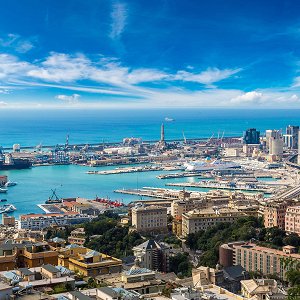Porta Soprana is a monument and one of the two surviving gates of the ancient city walls of Genoa, Italy. Its historical significance lies in its role as a defensive structure dating back to the 12th century. As an example of medieval military architecture, Porta Soprana is a symbol of the city's resilience and strategic importance throughout the centuries. Its architectural style reflects the military engineering feats of the time, with its imposing stone walls and towers that showcase the defensive techniques employed to protect the city from invasion. Visitors to Porta Soprana can immerse themselves in the rich history of Genoa and gain a greater appreciation for the city's past as a crucial trading and maritime hub.
The cultural symbolism of Porta Soprana extends beyond its defensive purpose, as it has become an iconic landmark representing the historical heritage of Genoa. Local stories and legends associated with the gate add to its allure, making it an intriguing destination for history enthusiasts. The accessibility and visitor information provided at the site allow tourists to explore and appreciate the architectural and historical significance of Porta Soprana. Guided tours offer an opportunity to engage with the site's history and gain insight into the medieval era, while preservation efforts ensure the gate's continued relevance as a historical and cultural attraction.
For visitors, experiencing Porta Soprana offers a unique opportunity to witness a tangible link to Genoa's past. The site's historical background and architectural significance contribute to the overall cultural experience of exploring the city. By visiting Porta Soprana, tourists can engage with the living history of Genoa and gain a deeper understanding of its role in shaping the region's identity.




